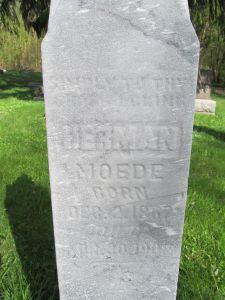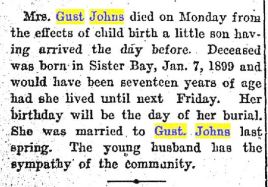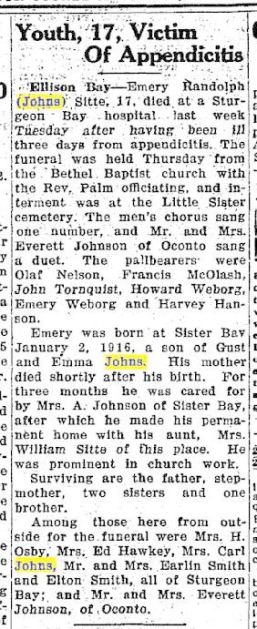As I mentioned in my last post, one of my most memorable genealogical finds is in regards to newspaper accounts that verified some old family stories that have been passed around the kitchen table for years. A lot of times these stories can sound pretty far-fetched or unlikely, or have been too vague to seem possible. But when I start digging around in old newspaper accounts and searching for records on these family members who lived long ago, I’m sometimes surprised by what I find.
Wally Struck often told his grandchildren this story about a tragic drowning, and a psychic who helped find the lost soul buried deep in the Lannon quarry. He said that a boy was swimming there and drowned, but even though they sent divers down and dredged the lake, no one could find the body. Then they sent to Milwaukee for a famous psychic, and he came to the small village of Lannon to help. Grandpa mentioned that they called the man Doctor even though he wasn’t truly one, although he couldn’t remember the man’s last name. He went on to tell us that when the “Doctor” came to the quarry, he pointed to one area of the lake and told the people they would find the body there, and that it hadn’t surfaced yet because it had been caught under a ledge. According to his story, divers found the body exactly where the psychic had told them to look.
By chance one day I was scanning the old Waukesha Freeman newspaper, and found this article in an edition dated November 13, 1924:
“Mrs. Wilhelmina Busse, aged 69 years, who disappeared from the home of her daughter, Mrs. Herman Joecks, Lannon, on Nov. 5, was found dead on Sunday, in a quarry pond east of Lannon. Mrs. Busse, who suffered from attacks of extreme nervousness, used to take long walks when the attacks came and it is believed that she took the wrong road when it became dark and by mistake walked the road leading to the quarry and accidentally was drowned. The pond was dragged for three days before the body was recovered. Dr. Roberts, Milwaukee, a spiritualist, was consulted. He told the family the mother would be found in the quarry pond. Sunday morning Dr. Roberts came to Lannon and told the searchers just where to locate her body. It wasn’t long before the body was brought to the surface. Coroner Lee was called and the remains were removed to this village. Funeral services were held on Tuesday from the Herman Joecks residence in Lannon and thereafter in St. John’s Lutheran church. Interment took place in Sunnyside cemetery. The deceased is survived by one son, C.A. Busse, Sussex, two daughters, Mrs. Joecks, Lannon, and Mrs. Ryan, of Arizona.”
There are so many facts in this article that match Grandpa’s story, that it can’t possibly be coincidence. The only real difference is the age and sex of the person who drowned, although this can be explained when you remember that Grandpa was only 9 years old when it happened and would understandably have forgotten some details. But it is quite intriguing just how much information he DID remember.
What I also find very interesting is that it turns out that the drowned person, Wilhelmina Busse, was in fact related to the Struck family by marriage – Grandpa Struck’s aunt Ida had married into the Joecks family. So this sad tale is interesting to our family on several levels.





